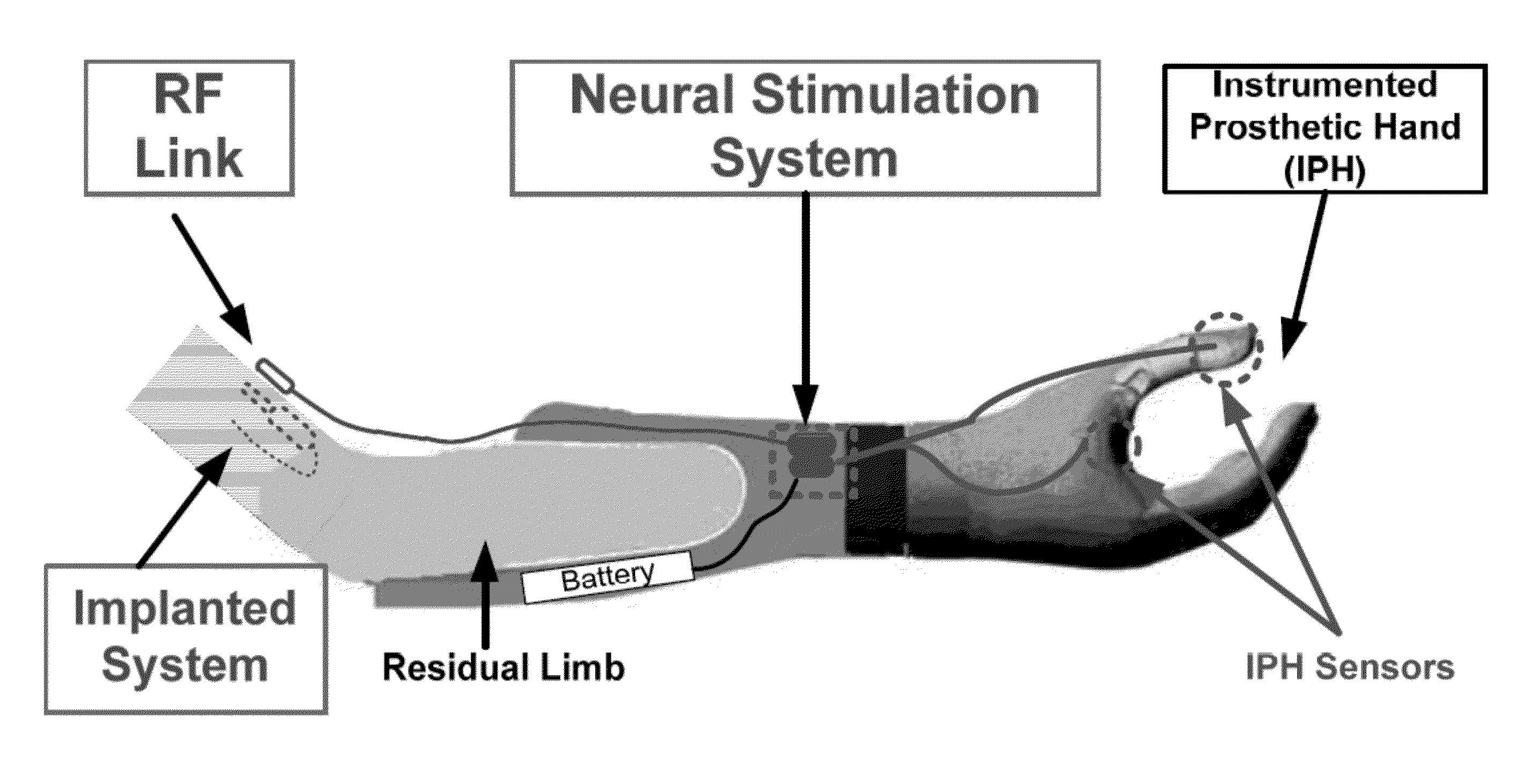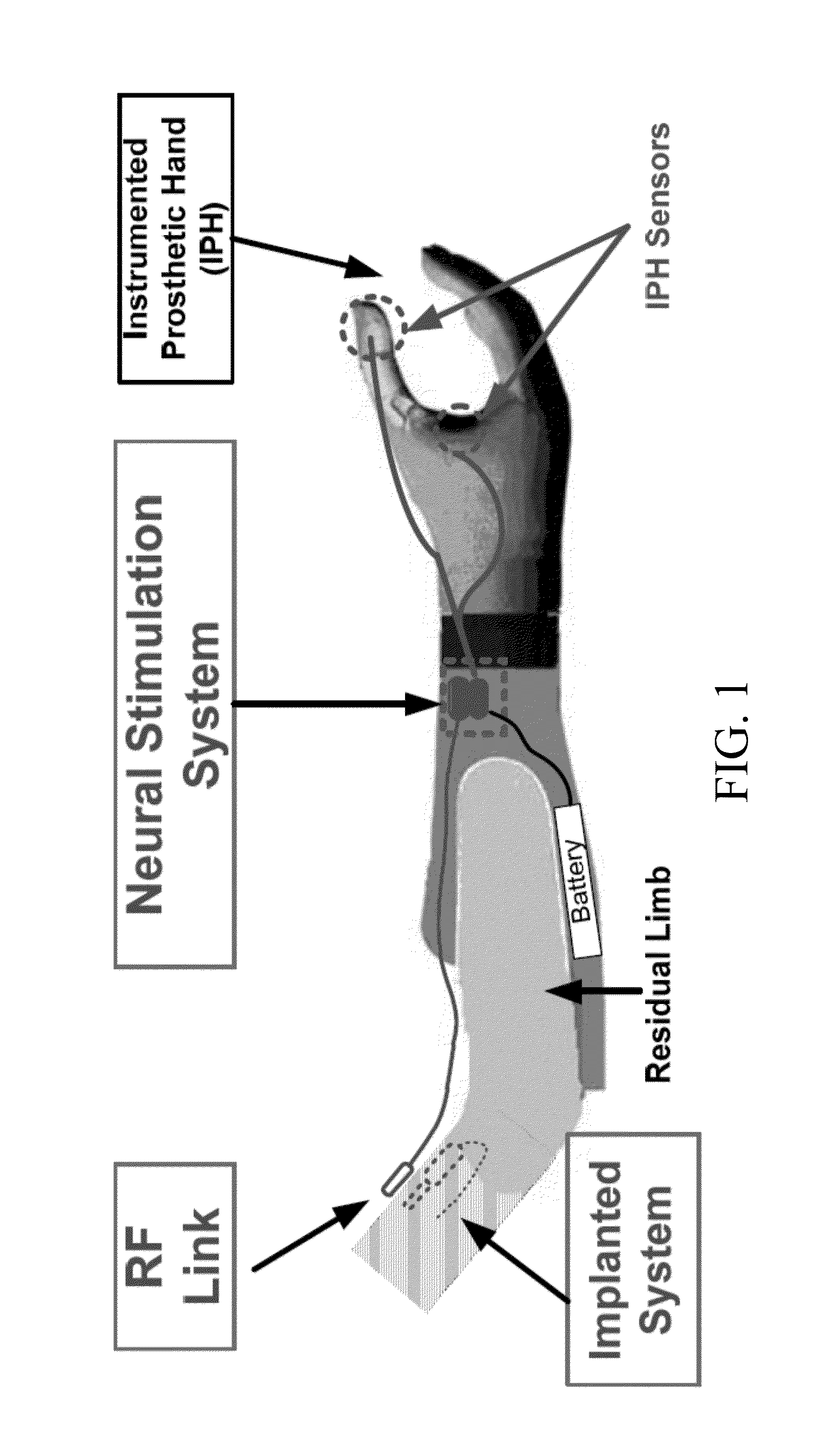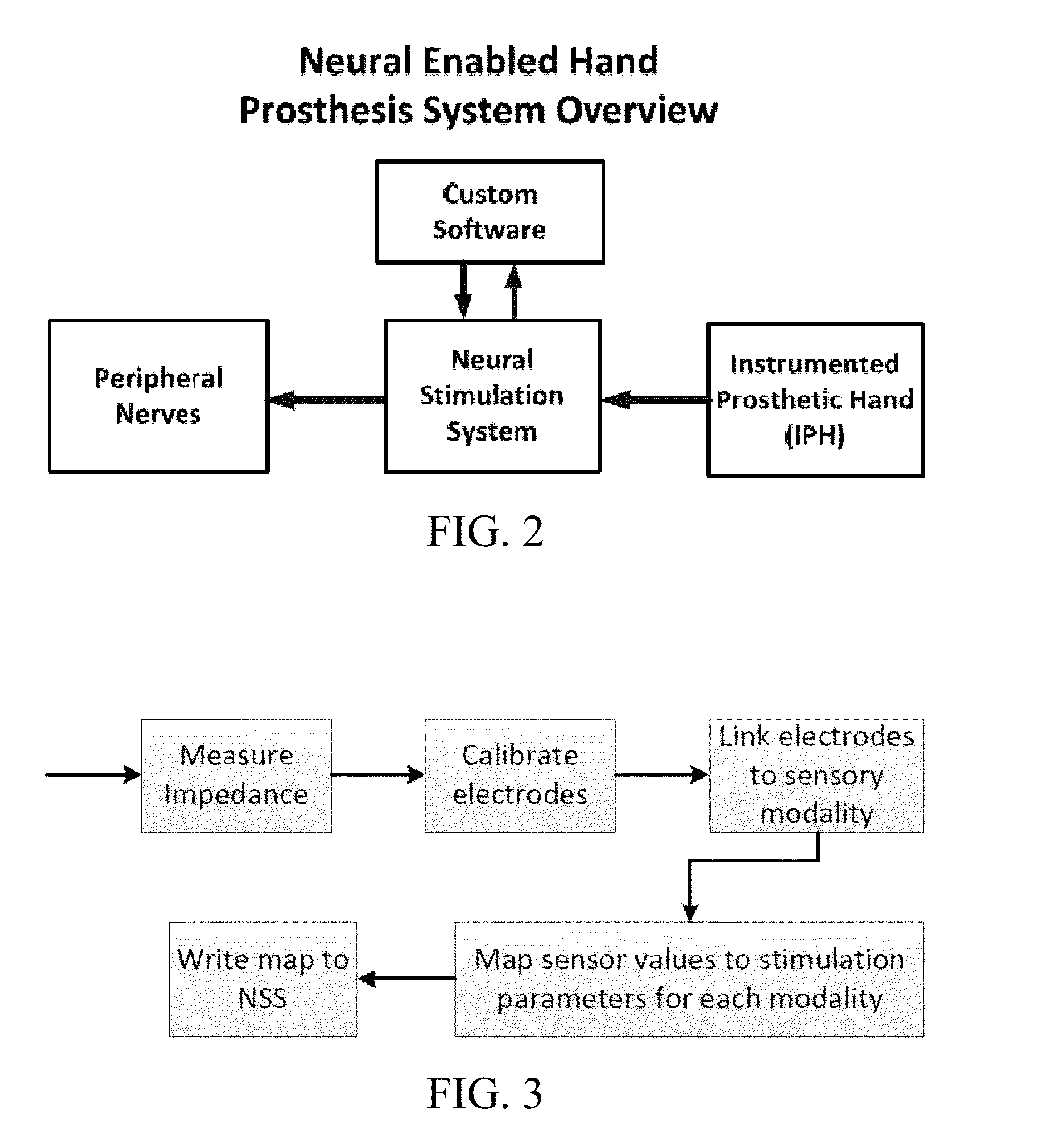Fitting system for a neural enabled limb prosthesis system
- Summary
- Abstract
- Description
- Claims
- Application Information
AI Technical Summary
Benefits of technology
Problems solved by technology
Method used
Image
Examples
Embodiment Construction
[0029]Embodiments of the subject invention provide systems and methods for fitting prostheses (e.g., neural-enabled prostheses), particularly prosthetic hands. Values from sensors of an instrumented prosthesis (IP), such as an instrumented prosthetic hand (IPH) that may or may not be controlled by motors, can be mapped to stimulation parameter values on one or more electrodes in or on the residual limb of the subject. The one or more electrodes can be in the vicinity of the related sensory fibers of the sensors or in the vicinity of motor fibers in the peripheral nerve. A system can include an IP having sensors, and the sensors can be, for example, for hand-opening and pinch force and / or the IP may have motors for control of the prosthesis. A system can also include a neural interface system (NIS) with a neural stimulation system (NSS) with an external processor to digitize and map the sensor values to stimulation parameters and / or the system can include a neural recording system (N...
PUM
 Login to View More
Login to View More Abstract
Description
Claims
Application Information
 Login to View More
Login to View More - R&D
- Intellectual Property
- Life Sciences
- Materials
- Tech Scout
- Unparalleled Data Quality
- Higher Quality Content
- 60% Fewer Hallucinations
Browse by: Latest US Patents, China's latest patents, Technical Efficacy Thesaurus, Application Domain, Technology Topic, Popular Technical Reports.
© 2025 PatSnap. All rights reserved.Legal|Privacy policy|Modern Slavery Act Transparency Statement|Sitemap|About US| Contact US: help@patsnap.com



